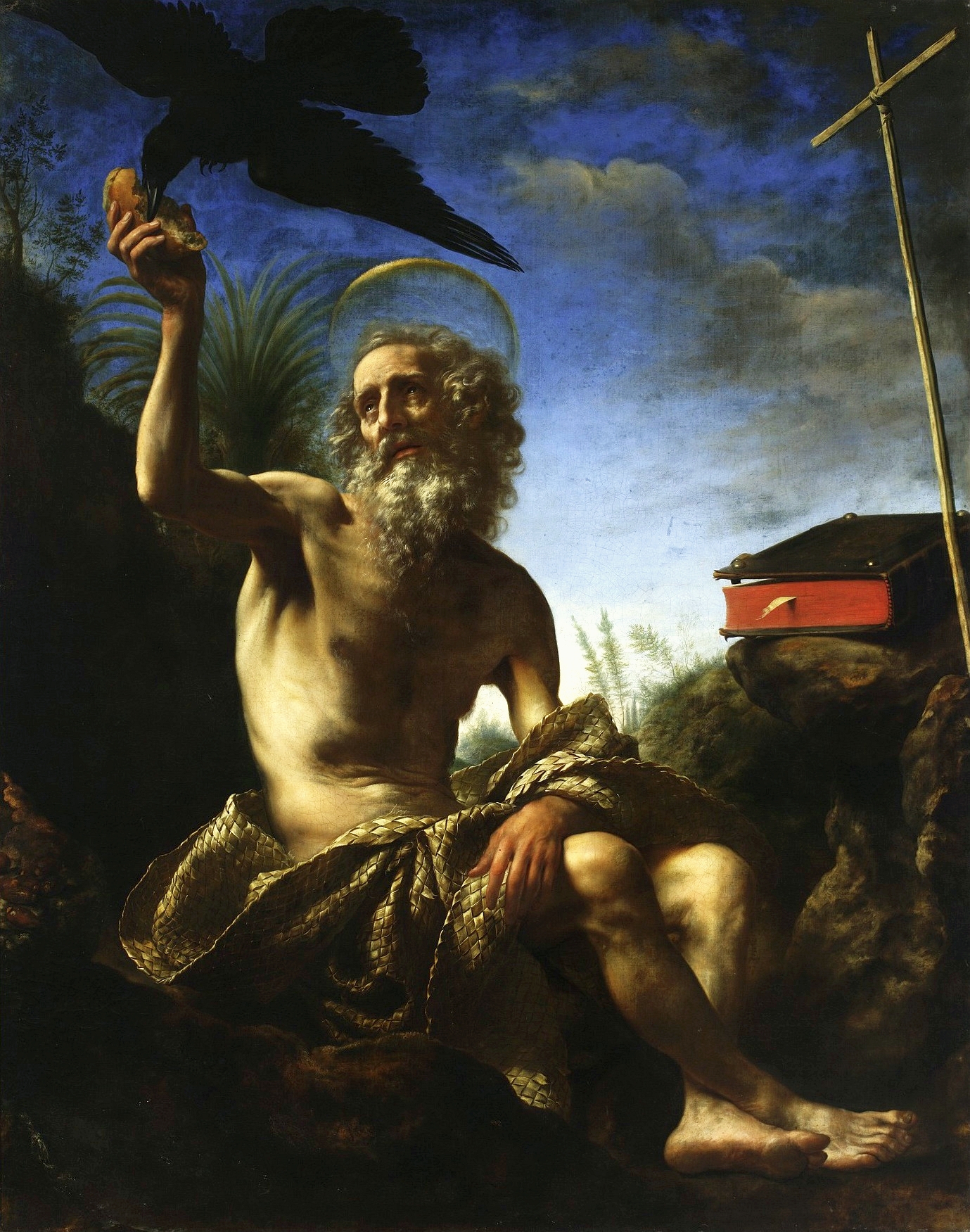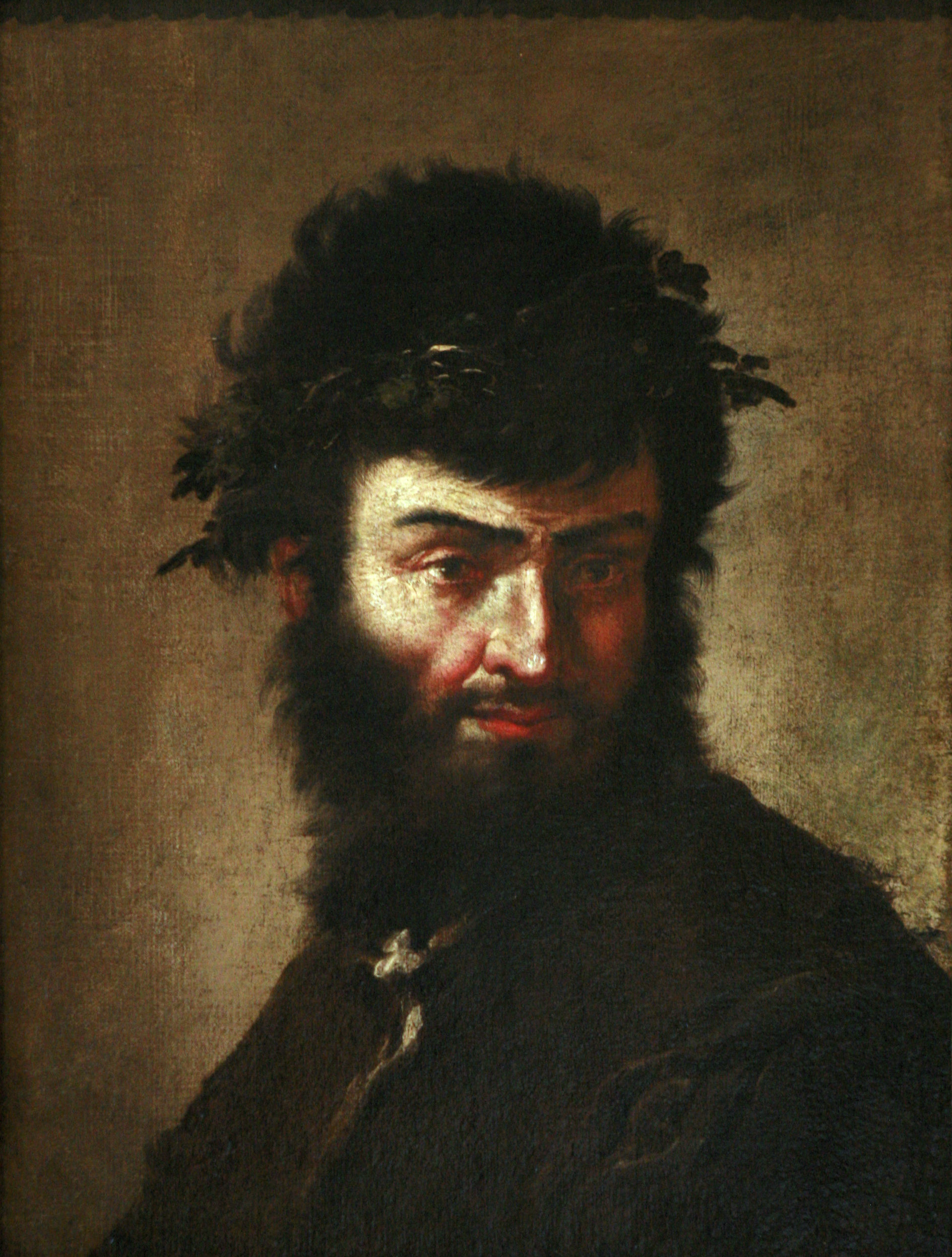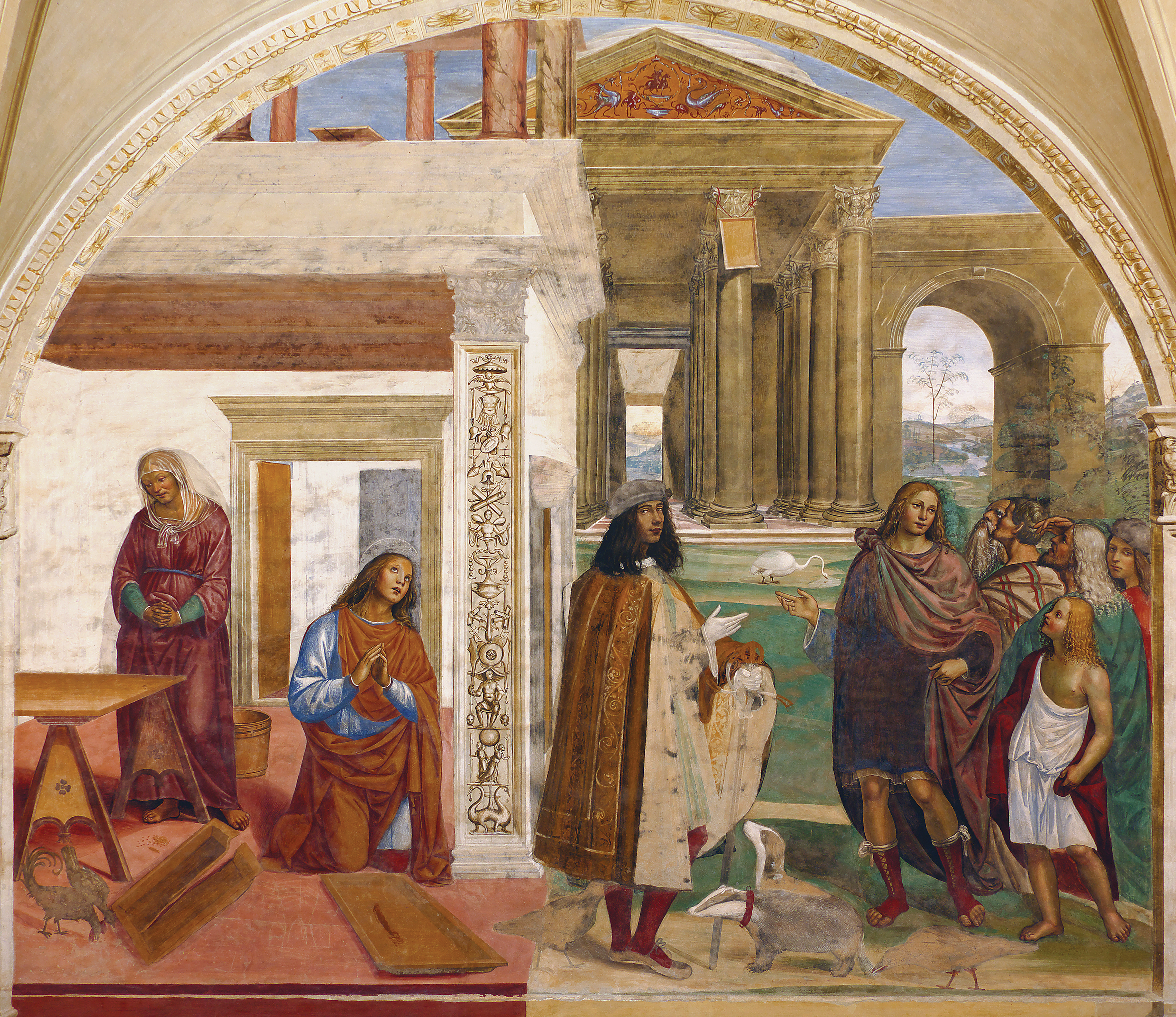|
Bob Jones University Museum And Gallery
The Museum & Gallery, Inc. is currently located on the campus of Bob Jones University in Greenville, South Carolina. It was established in 1951, and focuses on sacred art, mainly European Old Master paintings, but also includes smaller collections of sculpture, furniture, architectural elements, textiles, Greek and Russian icons, and ancient artifacts. As of 2017, the museum is closed for a planned move to downtown Greenville, SC. History Bob Jones Jr., son and successor of Bob Jones Sr. who founded the university, started collecting art in 1948. An acquisition fund was created to buy religious art from the western world to build a collection to serve both the University and South Carolina. The collection opened on Thanksgiving Day in 1951 with 25 paintings on display in two galleries next to the Bowen Collection of Antiquities. Even at this small beginning, the collection included works by Sandro Botticelli, Domenico Ghirlandaio, Tintoretto, Paolo Veronese, and Jusepe de Ribera. T ... [...More Info...] [...Related Items...] OR: [Wikipedia] [Google] [Baidu] |
Bob Jones Jr
Robert Reynolds Jones Jr. (October 19, 1911 – November 12, 1997) was the second president and chancellor of Bob Jones University. Born in Montgomery, Alabama, Jones was the son of Bob Jones Sr., the university's founder. He served as president from 1947 to 1971 and then as chancellor until his death. Education Educated by tutors and at Starke University School in Montgomery, Jones was a voracious reader who tackled everything from ''Tom Swift'' and ''Tarzan'' to Walter Scott and ''Foxe's Book of Martyrs''. When he was ten years old, his father gave him 50 missionary biographies for Christmas, which the boy finished by February. After graduating from Bob Jones College in 1931, when he was nineteen, Jones earned a master's degree in history at the University of Pittsburgh (1933) and did further graduate work at the University of Chicago Divinity School and Northwestern University. Jones was often called "Dr. Bob Jr." during his lifetime, although he disliked the "Jr." and his doct ... [...More Info...] [...Related Items...] OR: [Wikipedia] [Google] [Baidu] |
Master Of The Greenville Tondo
The Master of the Greenville Tondo is the notname for an Italian painter who was active between ca. 1454 and 1513. He is named after a tondo in the Bob Jones University Museum & Gallery in Greenville, South Carolina. He was probably from Tuscany or Umbria and was a follower of Pietro Perugino, according to art historians Federico Zeri and Everett Fahy. More than twenty works have been attributed to the painter. Works *Madonna and Child with Angels', Bob Jones University Museum & Gallery *''Adoration of the Christ Child by Mary and Joseph'', Museum of Fine Arts in St. Petersburg, Florida (this work is also known as the ''Jonas Nativity'') *''Madonna and Child with the young Saint John the Baptist and two angels'', sold at Sotheby's in 2011 for $30,000 *Altarpiece in the church of Santa Cristina in Pancole, Greve in Chianti *''Madonna and Child with Two Angels'', Ca' d'Oro, Venice *''Saint Sebastian'', Princeton University Art Museum *''Saint Sebastian'', New Jersey State Museum ... [...More Info...] [...Related Items...] OR: [Wikipedia] [Google] [Baidu] |
Pompeo Batoni
Pompeo Girolamo Batoni (25 January 1708 – 4 February 1787) was an Italian painter who displayed a solid technical knowledge in his portrait work and in his numerous allegorical and mythological pictures. The high number of foreign visitors travelling throughout Italy and reaching Rome during their "Grand Tour" led the artist to specialize in portraits. Batoni won international fame largely thanks to his customers, mostly British of noble origin, whom he portrayed, often with famous Italian landscapes in the background. Such Grand Tour portraits by Batoni were in British private collections, thus ensuring the genre's popularity in Great Britain. One generation later, Sir Joshua Reynolds would take up this tradition and become the leading English portrait painter. Although Batoni was considered the best Italian painter of his time, contemporary chronicles mention his rivalry with Anton Raphael Mengs. In addition to art-loving nobility, Batoni's subjects included the kings and qu ... [...More Info...] [...Related Items...] OR: [Wikipedia] [Google] [Baidu] |
Mattia Preti
Mattia Preti (24 February 1613 – 3 January 1699) was an Italian Baroque artist who worked in Italy and Malta. He was appointed a Member of the Order of Saint John. Life Born in the small town of Taverna in Calabria, Preti was called ''Il Cavalier Calabrese'' (the Calabrian Knight) after appointment as a Knight of the Order of St. John (Knights of Malta) in 1660. His early apprenticeship is said to have been with the " Caravaggist" Giovanni Battista Caracciolo, which may account for his lifelong interest in the style of Caravaggio. Probably before 1630, Preti joined his brother Gregorio (also a painter), in Rome, where he became familiar with the techniques of Caravaggio and his school as well as with the work of Guercino, Rubens, Guido Reni, and Giovanni Lanfranco. In Rome, he painted fresco cycles in the churches of Sant'Andrea della Valle and San Carlo ai Catinari. Between 1644 and 1646, he may have spent time in Venice, but remained based in Rome until 1653, returning later ... [...More Info...] [...Related Items...] OR: [Wikipedia] [Google] [Baidu] |
Carlo Dolci
Carlo (or Carlino) Dolci (25 May 1616 – 17 January 1686) was an Italian painter of the Baroque period, active mainly in Florence, known for highly finished religious pictures, often repeated in many versions. Biography He was born in Florence, on his mother's side the grandson of a painter. He was precocious and apprenticed at a young age to Jacopo Vignali, and when only eleven years of age he attempted a whole figure of St John, and a head of the infant Christ, which received some approbation. However Dolci was not prolific. "He would take weeks over a single foot", according to his biographer Baldinucci. His painstaking technique made him unsuited for large-scale fresco painting. He painted chiefly sacred subjects, and his works are generally small in scale, although he made a few life-size pictures. He often repeated the same composition in several versions, and his daughter, Agnese Dolci, also made excellent copies of his works. When only eleven years of age, he attempted ... [...More Info...] [...Related Items...] OR: [Wikipedia] [Google] [Baidu] |
Rutilio Di Lorenzo Manetti
Rutilio di Lorenzo Manetti (c. 1571 – 22 July 1639) was an Italian painter of late-Mannerism or proto-Baroque, active mainly in Siena. Biography He was influenced and/or taught by the local artists Francesco Vanni and Ventura Salimbeni. He is known to have collaborated with Raffaello Vanni, the son of Francesco. Among his masterpieces are his contributions to the Casino Mediceo, which he worked alongside Matteo Rosselli, Giovanni Lanfranco, and Cesare Dandini. One of his pupils or followers is Stefano Volpi. He is known for the following works in Siena or nearby towns: ''Story of St Catherine and Pope Gregory'' (1597; Palazzo Pubblico), ''Baptism of Christ'' (1600; church of San Giovannino in Pantaneto); a fresco cycle of the ''Story of St Roch'' (1605–1610; San Rocco alla Lupa), ''Pope Alexander I freed from prison by an Angel'' from San Giovanni Battista in Sant'Ansano in Greti; a ''Temptation of Saint Anthony'' (1620, Sant'Agostino); a ''Rest on the Flight to Egypt'' ( ... [...More Info...] [...Related Items...] OR: [Wikipedia] [Google] [Baidu] |
Luca Giordano
Luca Giordano (18 October 1634 – 3 January 1705) was an Italian late-Baroque painter and printmaker in etching. Fluent and decorative, he worked successfully in Naples and Rome, Florence, and Venice, before spending a decade in Spain. Early life and training Born in Naples, Giordano was the son of the painter Antonio Giordano. In around 1650 he was apprenticed to Ribera on the recommendation of the viceroy of Naples and his early work was heavily influenced by his teacher. Like Ribera, he painted many half-length figures of philosophers, either imaginary portraits of specific figures, or generic types. He acquired the nickname ''Luca fa presto'', which translates into "Luca paints quickly." His speed, in design as well as handiwork, and his versatility, which enabled him to imitate other painters deceptively, earned for him two other epithets, "The Thunderbolt" (''Fulmine'') and "The Proteus" of painting. Following a period studying in Rome, Parma and Venice, Gior ... [...More Info...] [...Related Items...] OR: [Wikipedia] [Google] [Baidu] |
Salvator Rosa
Salvator Rosa (1615 –1673) is best known today as an Italian Baroque painter, whose romanticized landscapes and history paintings, often set in dark and untamed nature, exerted considerable influence from the 17th century into the early 19th century. In his lifetime he was among the most famous painters,Jaffé, Hans L. C., editor. 1967. ''20,000 Years of World Painting.'' Harry N. Abrams, Inc., Publishers. New York. 418 pp. age 228/ref> known for his flamboyant personality, and regarded as an accomplished poet, satirist, actor, musician, and printmaker, as well. He was active in Naples, Rome, and Florence, where on occasion he was compelled to move between cities, as his caustic satire earned him enemies in the artistic and intellectual circles of the day. As a history painter, he often selected obscure and esoteric subjects from the Bible, mythology, and the lives of philosophers, that were seldom addressed by other artists. He rarely painted the common religious subjects, ... [...More Info...] [...Related Items...] OR: [Wikipedia] [Google] [Baidu] |
Giovanni Lanfranco
Giovanni Lanfranco (26 January 1582 – 30 November 1647) was an Italian painter of the Baroque period. Biography Giovanni Gaspare Lanfranco was born in Parma, the third son of Stefano and Cornelia Lanfranchi, and was placed as a page in the household of Count Orazio Scotti. His talent for drawing allowed him to begin an apprenticeship with the Bolognese artist Agostino Carracci, brother of Annibale Carracci, working alongside fellow Parmese Sisto Badalocchio in the local Farnese palaces. When Agostino died in 1602, both young artists moved to Annibale's large and prominent Roman workshop, which was then involved in working on the Galleria Farnese in the Palazzo Farnese gallery ceiling.Williamson, George. "Giovanni Lanfranco." The Catholic Encyclopedia Vol. 8. New York: Robert Appleton Co ... [...More Info...] [...Related Items...] OR: [Wikipedia] [Google] [Baidu] |
Andrea Del Sarto
Andrea del Sarto (, , ; 16 July 1486 – 29 September 1530) was an Italian painter from Florence, whose career flourished during the High Renaissance and early Mannerism. He was known as an outstanding fresco decorator, painter of altar-pieces, portraitist, draughtsman, and colorist. Although highly regarded during his lifetime as an artist ("without errors"), his renown was eclipsed after his death by that of his contemporaries Leonardo da Vinci, Michelangelo, and Raphael. Early life and training Andrea del Sarto was born Andrea d'Agnolo di Francesco di Luca in Florence on 16 July 1486. Since his father, Agnolo, was a tailor (Italian: '' sarto''), he became known as "del Sarto" (meaning "tailor's son"). Since 1677 some have attributed the surname Vannucchi with little documentation. By 1494 Andrea was apprenticed to a goldsmith, and then to a woodcarver and painter named Gian Barile, with whom he remained until 1498. According to his late biographer Vasari, he then apprent ... [...More Info...] [...Related Items...] OR: [Wikipedia] [Google] [Baidu] |
Il Sodoma
Il Sodoma (1477 – 14 February 1549) was the name given to the Italian Renaissance painter Giovanni Antonio Bazzi. Il Sodoma painted in a manner that superimposed the High Renaissance style of early 16th-century Rome onto the traditions of the provincial Sienese school; he spent the bulk of his professional life in Siena, with two periods in Rome. Biography Giovanni Bazzi was born in Vercelli, Piedmont, in 1477. His first master was the "archaic" Martino Spanzotti; he also appears to have been a student of the painter Giovenone. After acquiring the strong colouring and other distinctive stylistic features of the Lombard school and – though he is not known to have travelled to Milan – somehow absorbing the superficial mannerisms of Leonardo (Freedberg 1993:117), he travelled to Siena before 1503, perhaps at the behest of agents of the Spannocchi family, and began with fresco cycles for Olivetan monks and a series of small Ovidian ceiling panels and a frieze depicting t ... [...More Info...] [...Related Items...] OR: [Wikipedia] [Google] [Baidu] |
Marco D'Oggiono
Marco d'Oggiono (c. 1470 – c. 1549) was an Italian Renaissance painter and a chief pupil of Leonardo da Vinci, many of whose works he copied.Herbermann, Charles, ed. (1913). "Marco D'Oggione", ''Catholic Encyclopedia'' (New York: Robert Appleton Company). Biography and works He was born at Oggiono near Milan. Of the details of his life, we know almost nothing — not even the date of his important series of frescoes painted for the church of Santa Maria della Pace in Milan. He probably died in Milan. Luigi Lanzi gave 1530 as the date of his death, but various writers in Milan say it took place in 1540, and now the best accepted date is 1549. He was a hard-working artist, but his work has since been criticized by some for paintings are wanting in vivacity of feeling and purity of drawing, while, in his composition, it has been well said that "intensity of color does duty for intensity of sentiment". He copied Leonardo's ''Last Supper'' repeatedly, and one of his best co ... [...More Info...] [...Related Items...] OR: [Wikipedia] [Google] [Baidu] |

2.jpg)



